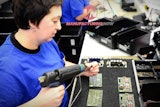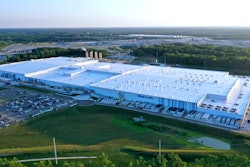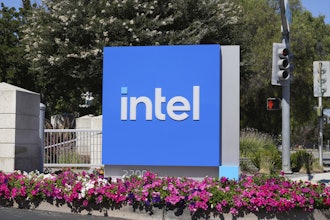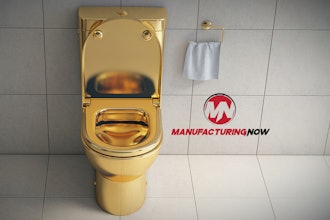
The micro-factory was first invented in 1990 by the Mechanical Engineering Laboratory of Japan, which refers to cell-based manufacturing in a multitude of small and highly automated plants to deliver customized goods locally. Businesses benefit from micro-factories given their ability to customize goods, a way to differentiate themselves from the competition. Additional benefits include quick deployment, higher flexibility, lower capital investment and reduced environmental impact. While there is heightened interest in and benefits associated with micro-factories, the phenomenon has not yet made it into the mainstream. However, with nearshoring gaining steam, there may be an opportunity for micro-factories to become competitive in the current manufacturing landscape. For micro-factories to become mainstream, manufacturers should invest in a modern cloud and IT infrastructure to improve operations and to quickly adapt to consumer demands quickly.
The micro-factory originated from the concept of having smaller automated, digital factories, like a pop-up shop, to supply high demand goods and services locally. A benefit associated with the micro-factory includes being close to customers and avoiding import tariffs. Micro-factories also do not take up as much space as regular-sized factories or Gigafactories, which allows for the quick construction of these facilities. The nimble nature of micro-factories allows for businesses to focus efforts on one popular product to meet local consumer needs.
However, there are many challenges and constraints associated with the micro-factory concept. The most significant challenge is addressing customization, a key factor for manufacturers to remain competitive. Manufacturers are unable to customize across many industries given the lack of warehousing capability limits. Moreover, the micro-factory logistics chain is not fully automated and is inept to support further production to meet the needs of customization. The lack of ability to scale limits the micro-factory from diversifying quickly and improving the bottom line. Micro-factories are not created to process large amounts of data that come with creating more complex products. To address more complex and custom consumer demand, manufacturers will be unable to successfully scale with a micro-factory to process high volumes of data. This ultimately forces businesses to find more land and space for a larger facility. Due to these constraints, micro-factories have not become as popularized as manufacturers are unable to scale quickly while maintaining competitiveness.
While micro-factories have not taken off, nearshoring, or the relocation of factories from low-cost to high-cost countries, has gained steam in the last few years. In the past, offshoring dominated manufacturing due to the availability of cheap labor and overall cheaper operating costs. Similar to the benefit of a micro-factory, manufacturers have prioritized closeness to market to reduce the costs of transportation and logistics, which have become increasingly complex. Another reason for the rise of nearshoring includes the heightened governmental pressures for manufacturers to reduce environmental footprints. Many manufacturers now have financial incentives to nearshore and decrease their carbon footprint as it relates to transportation. Additionally, Western governments have strict labor laws, upholding high standards and giving out large fines to manufacturers who do not comply with regulations, instigating businesses to nearshore. Moreover, governments are also incentivizing businesses to nearshore by providing them with resources for developing areas in Western countries. Lastly, nearshoring provides the opportunity to lessen labor intensity, as there are more options to automate the shop floor in these large factories. While employees will still need to be hired to ensure a factory runs smoothly, instead of having thousands of workers, businesses can hire less people to use modern technology to save time and improve efficiency across the board.
Fueled with the trend of nearshoring, micro-factories could potentially take off in the next few years pending the adoption of IT cloud infrastructure manufacturers. With the rise of automation and AI on the plant floor, manufacturers can rely on these technologies to increase production efficiency and quickly scale operations. At the heart of any successful modern factory is a modern cloud infrastructure to swiftly deploy automation and 3D printing operations. A cloud solution helps manufacturers manage the numerous digital elements in a modern factory. Moreover, there is end-to-end visibility on the shop floor and beyond, allowing leaders to make informed business decisions in real-time based on data insights. Complex factories’ success relies on the cloud to monitor the complexity associated with high volumes of output. A cloud infrastructure also provides leaders with the flexibility to manage an unprecedented supply chain. Without the cloud, a modern factory does not have the ability to scale and customize products to meet consumer needs.
While the micro-factory is a great visionary concept, it has not been as widespread as expected given the associated complexity of the supply chain and the limited capability to stock physical components needed for mainstream manufacturing. A modern IT and cloud infrastructure is necessary for any factory and is vital for the success of micro-factories. With the right technology, micro-factories could very likely become a crucial part of the manufacturing landscape, and resultingly, manufacturers will become more competitive and better meet customer demands.
---
Henning Dransfeld is the Director of Strategy & Industry Solutions for Infor. For more information, visit www.infor.com.























